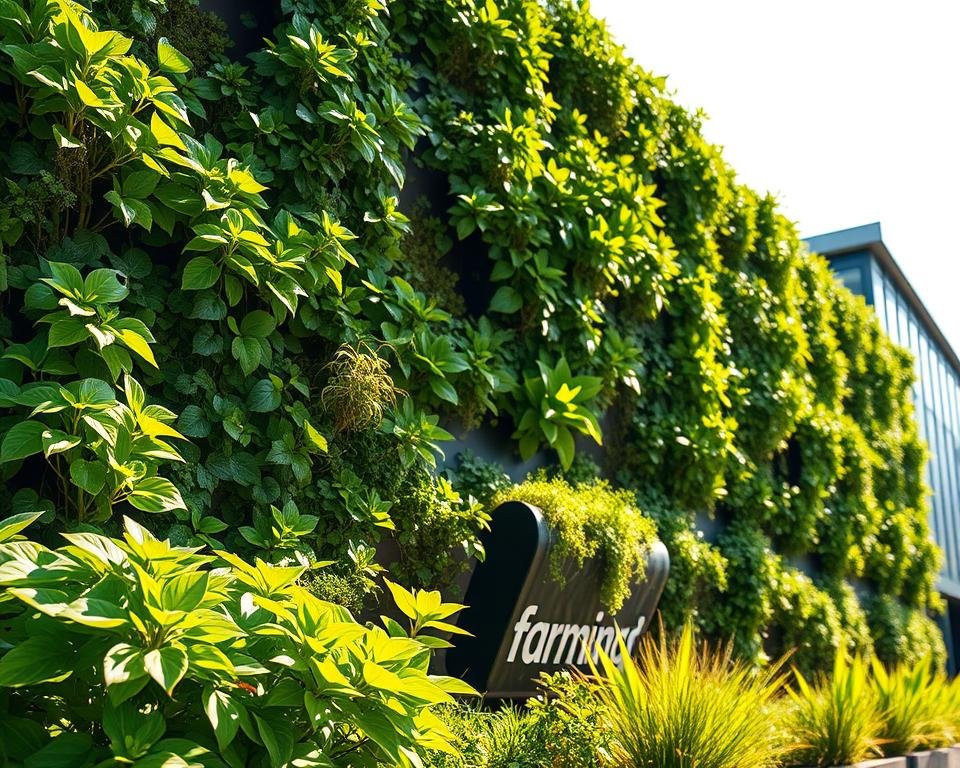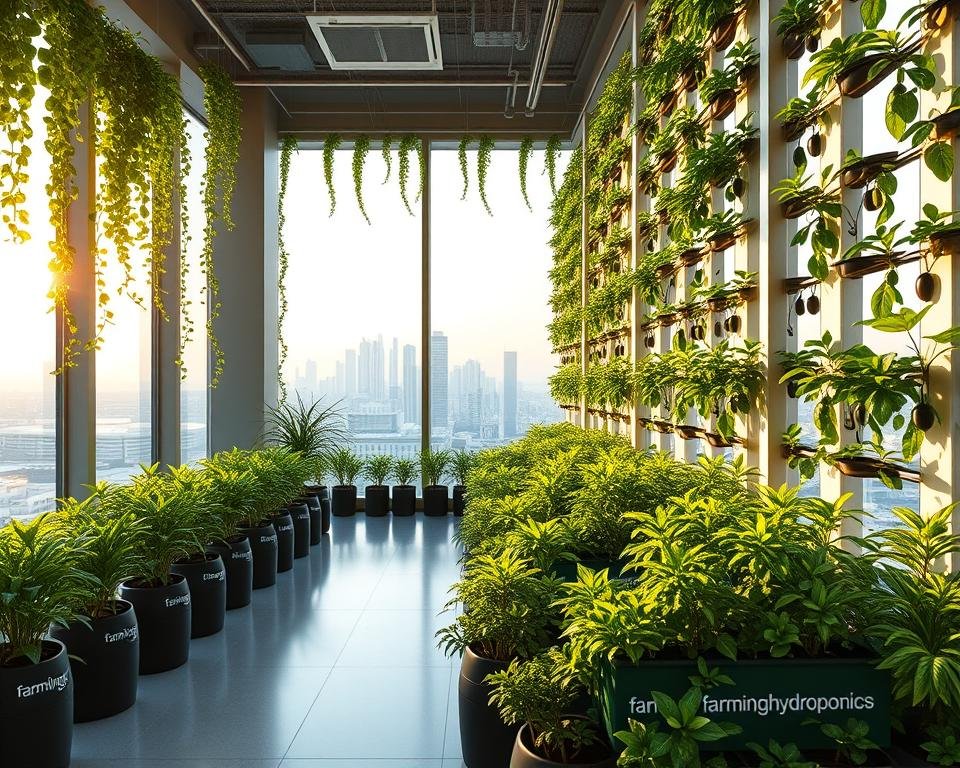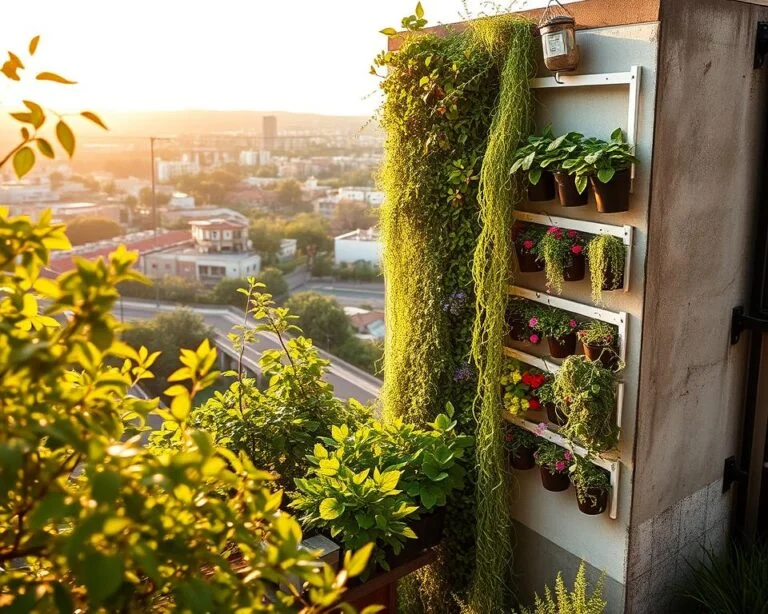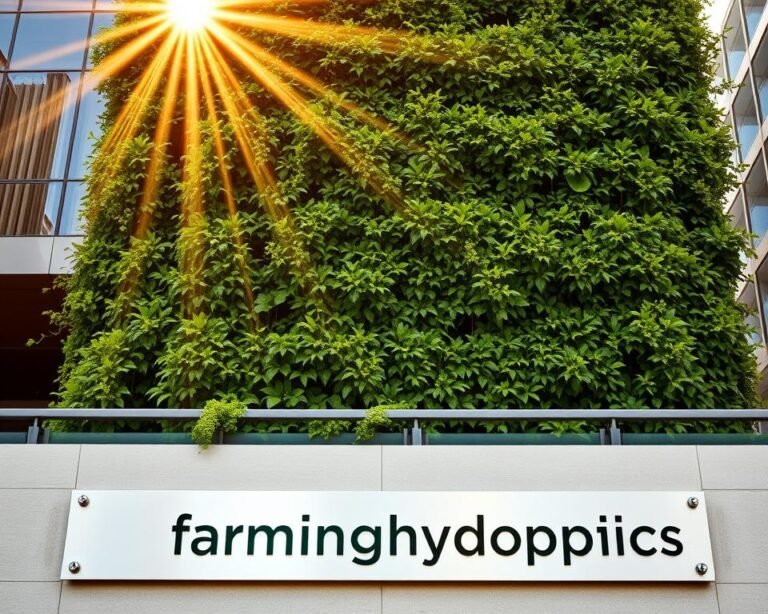Commercial Applications: Vertical Gardens for Business
Imagine entering a workspace that feels alive—walls transformed into green, thriving ecosystems. Today, vertical gardens are no longer futuristic décor; they’re practical commercial applications that deliver wellness, sustainability, and bold design for modern businesses.
Companies increasingly seek innovative ways to shape their environments, and vertical gardens lead the trend. These commercial applications lower energy costs, enhance employee well‑being, and showcase a brand’s commitment to eco‑friendly practices.
What was once a luxury feature has become an essential element of forward‑thinking workspaces. By integrating these living walls, businesses signal dedication to sustainability, health, and innovation—turning offices, hotels, and retail venues into vibrant, people‑centric spaces.
Key Takeaways
- Vertical gardens dramatically transform commercial spaces
- Green walls offer significant energy efficiency improvements
- Employee wellness directly correlates with innovative workplace design
- Sustainable solutions are increasingly important in modern business strategies
- Vertical gardens represent an intersection of aesthetics and functionality
Understanding Vertical Gardens and Living Wall Systems
Vertical gardens are a new way to make spaces green. They turn old areas into lively, three-dimensional spots. These systems do more than look good; they help out in cities and businesses.
Today’s vertical gardens use new tech to be green and smart. They’re not just for looks. They mix good looks with green tech.
Types of Vertical Garden Systems
There are many vertical garden types for different needs:
- Modular Panel Systems: Easy to set up and change
- Felt Pocket Systems: Light and flexible
- Container Systems: Fit many places
- Hydroponic Systems: Save water and are easy to care for
Essential Components of Living Walls
| Component | Function | Key Benefit |
|---|---|---|
| Irrigation System | Water distribution | Keeps plants watered |
| Growing Media | Supports plants and gives nutrients | Helps plants grow well |
| Support Structure | Keeps the wall strong | Keeps the wall stable |
Plant Selection Criteria
When picking plants for vertical gardens, think about:
- Light needs for plant health
- How hard they are to care for
- If they look good together
- If they clean the air
Studies show that vertical gardens make workplaces better. They make people happier and more productive. This shows how good living walls are for work places.
Environmental Benefits and Sustainability Impact

Vertical gardens are a great way for businesses to fight environmental issues and boost sustainability. They do more than look good; they turn workspaces into green havens.
Vertical gardens have big environmental pluses. They can lower wall temperatures by 30-40°F, saving a lot of energy. Studies show they can even cut a building’s energy use by up to 0.7%, making them a smart choice for green design.
“Green infrastructure is not just about beauty—it’s about creating resilient, efficient urban ecosystems.” – Climate Innovation Expert
Some key benefits of vertical gardens include:
- Natural air filtration and pollution reduction
- Urban biodiversity enhancement
- Noise pollution mitigation
- Stormwater management improvement
Companies that invest in vertical gardens show they care about the planet. With 89% of Gen Z seeing climate change as a major issue, these green spaces show a company’s dedication to the environment.
| Environmental Benefit | Impact Metric |
|---|---|
| Air Quality Improvement | Reduces indoor pollutants by 87% |
| Temperature Regulation | Reduces wall temperatures 30-40°F |
| Energy Efficiency | Cuts building energy use by 0.7% |
By adding vertical gardens, your business can use new tech to improve green design. These tools help track and boost the environmental impact of living walls.
Commercial Applications and Business Integration
Vertical gardens have moved from just being pretty to being key business tools. They make workspaces better, helping employees work better and making the company look good.

Companies in many fields are finding new ways to use vertical gardens. They use tools like named entity recognition and topic modeling to see how these gardens can improve spaces.
Office Building Implementation
Today’s offices are adding vertical gardens as a way to improve health. These gardens bring many benefits:
- Improved air quality
- Noise reduction
- Enhanced employee mental health
- Aesthetically pleasing work environments
Retail and Hospitality Spaces
Retail shops and hotels are using vertical gardens to make memorable experiences for customers. Integrating green walls can turn simple places into amazing spots that draw in and keep visitors.
Corporate Branding Opportunities
Vertical gardens also offer great chances for branding. Companies can make special green spaces that show their green side. This makes a strong statement about what the company stands for.
By adding vertical gardens, businesses show they care about the planet. They also create exciting, inspiring places that attract the best workers and impress clients.
Design Principles and Technical Considerations

Creating successful commercial vertical gardens needs careful planning and technical skills. Your design must look good and work well. It should use advanced tech like sentiment analysis and smart monitoring.
Key design principles cover several important areas:
- Structural support and engineering
- Advanced irrigation management
- Lighting optimization
- Environmental control systems
Your vertical garden’s success depends on strong structural elements. Waterproofing and drainage systems are key to avoid damage. Like chatbots, automated plant management systems make maintenance easier.
Lighting is crucial for plant health and garden success. When natural light is not enough, specialized grow lights are needed. These lights must spread light evenly and match natural sunlight to help plants grow.
Water management is another key technical area. Precision irrigation systems with smart sensors check moisture levels. They cut down water waste and keep plants hydrated. Advanced tech lets for real-time tracking and automatic adjustments, similar to sentiment analysis.
Design is not just about appearance, but creating living, breathing ecosystems within commercial spaces.
Successful vertical garden design is a mix of beauty and technical know-how. It turns business spaces into lively, green areas.
Installation and Maintenance Requirements
Creating a successful vertical garden needs careful planning and smart setup. How you install and maintain it will affect its health and look. Experts say getting a pro to install it is key for the best results.
The setup process has several important steps. First, you need to check the environment, like temperature and humidity. It’s also crucial to know the space needed. Detailed plans and a checklist are vital, as technical guides suggest.
Keeping your garden in top shape is important. Experts suggest a regular care plan. This includes checking plant health, managing nutrients, and fixing problems quickly. Doing this can cut down on maintenance issues by up to 9%.
Your vertical garden’s success relies on ongoing care and expert help. By following strict setup rules and a detailed care plan, your garden will thrive. Regular checks, controlling the environment, and following the manufacturer’s advice will keep your garden looking great for a long time.







